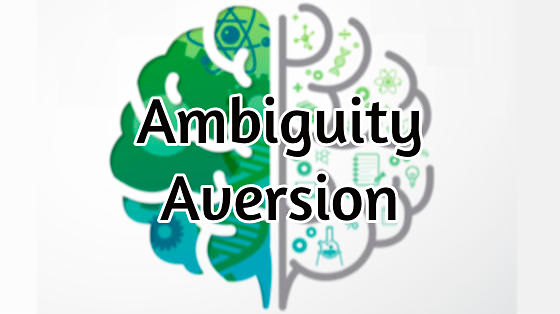
The Difference between Risk and Uncertainty: Ambiguity Aversion
Two boxes. Box A contains one hundred balls: fifty red and fifty black. Box B also holds one hundred balls, but you don’t know how many are red and how many are black. If you reach into one of the boxes without looking and draw out a red ball, you win $100. Which box will you choose: A or B? The majority will opt for A.
Let’s play again, using exactly the same boxes. This time, you win $100 if you draw out a black ball. Which box will you go for now? Most likely you’ll choose A again. But that’s illogical! In the first round, you assumed that B contained fewer red balls (and more black balls), so, rationally, you would have to opt for B this time around.
Don’t worry; you’re not alone in this error—quite the opposite. This result is known as the “Ellsberg Paradox”—named after Daniel Ellsberg, a former Harvard psychologist. (As a side note, he later leaked the top-secret Pentagon Papers to the press, leading to the downfall of President Nixon.) The Ellsberg Paradox offers empirical proof that we favor known probabilities (box A) over unknown ones (box B).
Thus we come to the topics of risk and uncertainty (or ambiguity), and the difference between them. Risk means that the probabilities are known. Uncertainty means that the probabilities are unknown. On the basis of risk, you can decide whether or not to take a gamble. In the realm of uncertainty, though, it’s much harder to make decisions. The terms “risk” and “uncertainty” are as frequently mixed up as “cappuccino” and “latte macchiato” with much graver consequences. You can make calculations with risk, but not with uncertainty. The three-hundred-year-old science of risk is called statistics. A host of professors deal with it, but not a single textbook exists on the subject of uncertainty. Because of this, we try to squeeze ambiguity into risk categories, but it doesn’t really fit. Let’s look at two examples: one from medicine (where it works) and one from the economy (where it does not).
There are billions of humans on earth. Our bodies do not differ dramatically. We all reach a similar height (no one will ever be on hundred feet tall) and a similar age (no one will live for ten thousand years—or for only a millisecond). Most of us have two eyes, four heart valves, thirty-two teeth. Another species would consider us to be homogeneous—as similar to one another as we consider mice to be. For this reason, there are many similar diseases and it makes sense to say, for example: “There is a 30 percent risk you will die of cancer.” On the other hand, the following assertion is meaningless: “There is a 30 percent chance that the euro will collapse in the next five years.” Why? The economy resides in the realm of uncertainty. There are not billions of comparable currencies from whose history we can derive probabilities. The difference between risk and uncertainty also illustrates the difference between life insurance and credit default swaps. A credit default swap is an insurance policy against specific defaults, a particular company’s inability to pay. In the first case (life insurance), we are in the calculable domain of risk; in the second (credit default swap), we are dealing with uncertainty. This confusion contributed to the chaos of the financial crisis in 2008. If you hear phrases such as “the risk of hyperinflation is x percent” or “the risk to our equity position is y,” start worrying.
To avoid hasty judgment, you must learn to tolerate ambiguity. This is a difficult task and one that you cannot influence actively. Your amygdala plays a crucial role. This is a nut-sized area in the middle of the brain responsible for processing memory and emotions. Depending on how it is built, you will tolerate uncertainty with greater ease or difficulty. This is evident not least in your political orientation: The more averse you are to uncertainty, the more conservatively you will vote. Your political views have a partial biological underpinning
Either way, whoever hopes to think clearly must understand the difference between risk and uncertainty. Only in very few areas can we count on clear probabilities: casinos, coin tosses, and probability textbooks. Often we are left with troublesome ambiguity. Learn to take it in stride.
* Source: The Art of Thinking Clearly by Rolf Dobelli
